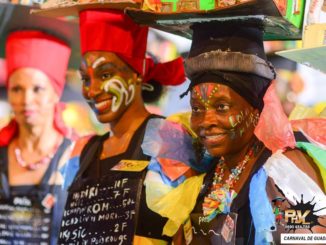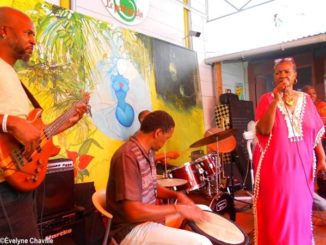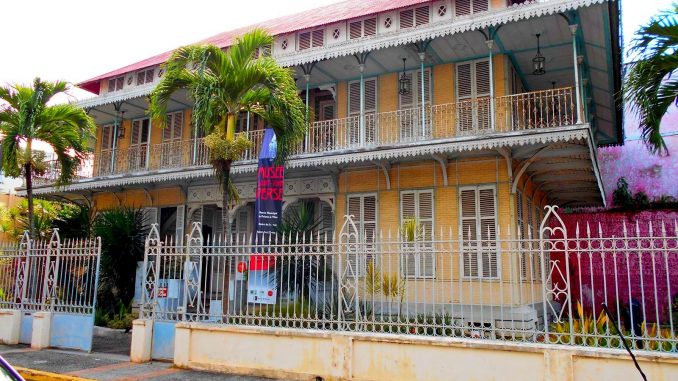
The Saint-John Perse Municipal Museum in Pointe-à-Pitre celebrates its 30 years of existence this year. From May 31 to July 1, admission is free. A great opportunity to get to know better the Guadeloupean poet, winner of the Nobel Prize in Literature in 1960, and to discover historical and artistic items.
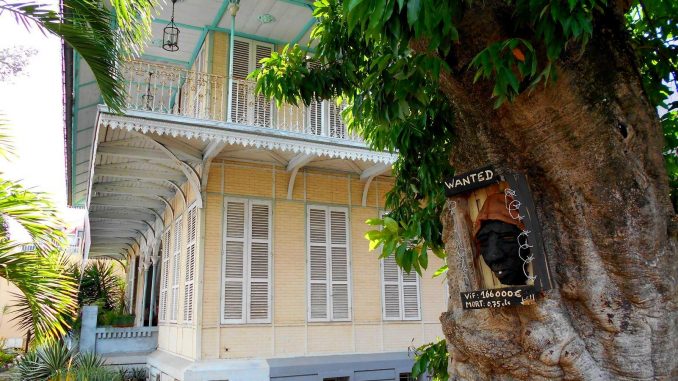
We all know this beautiful colonial-style house located at Nozières street in Pointe-à-Pitre, not far from the pedestrian street. That’s where the Saint-John Perse Municipal Museum is housed. For a fairly low cost (2.50 euros), the visitor can discover there the richness of Guadeloupean culture.
For years, there was a lot of extrapolation about the past of this mansion. Indeed, it was said that this great house and the Zévallos House in Le Moule would have arrived in Guadeloupe due to bad weather. Both would have been ordered in France at the end of the 19th century by a wealthy inhabitant of Louisiana, but after a cyclone, the ship which carried them would have stopped in Pointe-à-Pitre. The captain of the boat would have decided to sell them at auction : one would have been bought by Mr. Souques, the director of Darboussier Factory, the other would have been settled in the town of Le Moule, the latter became famous because of its beauty but also because it would be haunted.
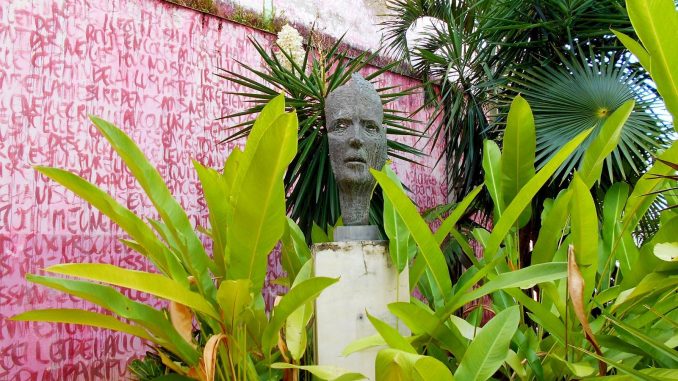
A very rich architecture
Lovers of legends will be disappointed because, according to Laure Goblet, Director of the Saint-John Perse Municipal Museum for ten years : “That was not true. Ernest Souques, the Director of the Darboussier Factory had the financial means to buy a house without going through the auction. In addition, Gustave Eiffel was not the only metal manufacturer at that time, in France. After the great fire of 1871 that devastated the entire southwest quarter of Pointe-à-Pitre, vast areas of land are for sale. Ernest Souques, who founded the Darboussier Sugar Factory (1869) a few years before, was trying to settle in the city because the Souques family was from Port- Louis. He bought five parcels of land that made up a large plot of almost 900 m2 in the heart of the city center, in the commercial district of the dock. He bought this house through a catalog and from there he could see his factory. We do not know when the house was ordered and assembled. However, it is attested that it was completed in 1875 because we found a marriage certificate that was signed here that year”.
The architecture of the house is very rich: metal framework, steps in freestone in the entrance, ground of the stoop in white marble and black cabochons, loggia decorated with ceramic tiles, paneling on the walls of the living room, zinc friezes in the balcony floor and along the awning, small pillars in cast iron etc.
In 1979, the front of the house was classified as Historic Monument. In the 1970s, Henri Bangou, the former mayor of Pointe-à-Pitre and his municipal council decided to purchase the colonial house which belonged to the Sarkis family and transform it into a municipal museum dedicated to Saint-John Perse. The municipality was assisted by the poet’s great-niece, Denise Derivery Dormoy (President of Association Guadeloupéenne Saint-John Perse) who will give to the museum letters of the poet, old postcards among other thing. On May 31, 1987, on the occasion of the 100th anniversary of the birth of the poet, the new Saint-John Perse Municipal Museum was inaugurated.

A celebration of 30 years of culture
Marie-René Auguste Alexis Leger, whose last pen name was Saint-John Perse, did not live in this house on Nozières street. He was born not far away at 54, Achille René-Boisneuf street in Pointe-à-Pitre, about 12 years after the construction of the house in the neighborhood. Alexis Leger spent the first twelve years of his life at the family home in Pointe-à-Pitre, in “La Josephine House” in the Saint-Claude highlands and in “Bois Debout House” in Capesterre-Belle-Eau before leaving for France with his family.
This year, the Saint-John Perse Municipal Museum celebrates its 30th anniversary. To mark the occasion, from May 31 to July 1, the entrance is free.
In the garden, visitors will see medicinal and ornamental plants, trees among which the famous hundred-year-old litchi, works of art such as the huge fresco on which the Guadeloupean painter Thierry Alet copied the poem “Exil” that was written by Saint-John Perse in 1942, the “Maroon” by the Guadeloupean sculptor Jérôme Jean-Charles and especially the bronze “Perse Mask”, made in 1969 by the Hungarian sculptor András Beck at the request of the poet.
At the ground floor, they can admire two beautiful chandeliers suspended from the decorated ceiling, traditional costumes, creole furniture in mahogany, paintings… One of these paintings signed A.J. and entitled “Brig in Pointe-à-Pitre Bay” is the musuem’s lastest acquisition ; it was bought during an auction in April, 2016 in Drouot (Paris). This work has an exceptional artistic and historic value. Indeed, made in 1848 (year of the abolition of slavery), it is the older of the two known paintings representing Pointe-à-Pitre bay. This sunset, painted in an Impressionist style, shows with an excellent geographical precision, the Basse-Terre mountain range, the islets and boats in the harbor, among them a brig which was the favorite ship of slave traders and corsairs at that time.
The reconstruction of the interior of a bourgeois house on the ground floor testifies to the Creole universe of the childhood of Saint-John Perse.
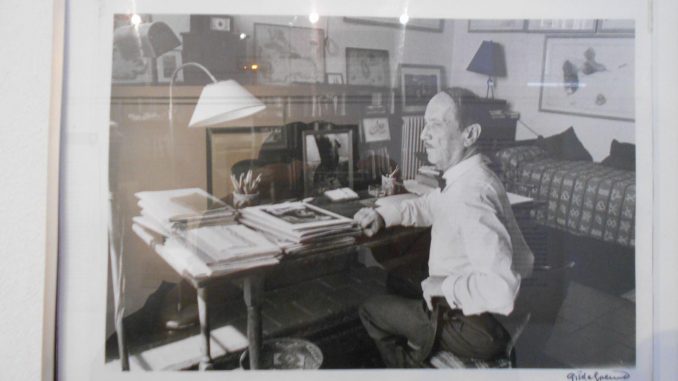
The man, the poet and the diplomat
Visitors will discover or rediscover on the first and second floors of the house the permanent exhibition dedicated to the life, the work of the 1960 Nobel Prize winner in Literature and his career as a French diplomat which is often ignored.
Among these objects, there are his literary works, reproductions of his poems on the walls, many photographs especially with the members of his family during his childhood in Guadeloupe, a copy of his diplomatic passport, his medals, his cane, his hat etc. When he died on September 20, 1975, the writer bequeathed all his writings and all the books of his personal library to the city of Aix-en-Provence (France), his wife, Dorothy, gave to the museum of Pointe-à-Pitre some photos.
Moreover, in the copy of a long letter sent to his cousin in Guadeloupe and exhibited at the museum, Saint-John Perse explains how much he misses his native island and how much he would like to go back there. “This letter denies the criticisms made against him by some people in Guadeloupe. Saint-John Perse loved his island. He always wanted to come back, but he was very busy with his career as a diplomat, and then he experienced terrible moments in his life : he lost French nationality, he was removed from the Order of the Legion of Honor, he went into exile in the United States and, because of his differences of points of view with Charles de Gaulle, the latter will not congratulate him when he was awarded the Nobel Prize for Literature in 1960 ; André Malraux (Minister of Cultural Affairs) will attend the award ceremony with his own money. His patrons helped him to live. He had the opportunity to travel to Antigua and he hoped to go to Guadeloupe but the friend whom he had accompanied fell ill and they had to return to the United States (…) He was also a French Nobelist who was not in textbooks for many years,” says Laure Goblet.
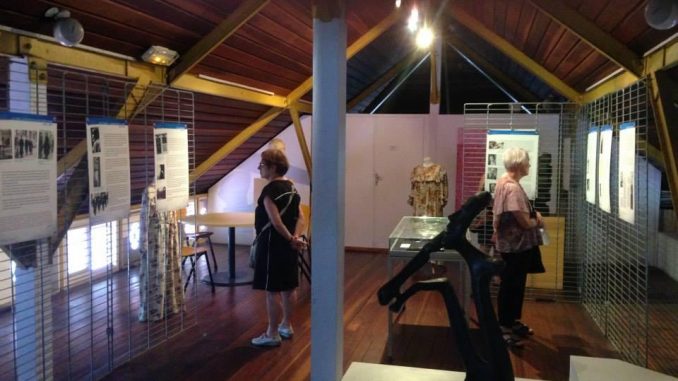
An Association of Friends of Museum
Since its creation, the Saint-John Perse Municipal Museum has hosted many temporary exhibitions including “De Fil en Aiguille” dedicated to the history of Creole costume in 2004 and “50 Years of the Nobel Prize” in 2010 ; on this occasion, and for the first time, all the documents about the poet were shown to the public.
It should to be noted that during this 30th anniversary celebration, visitors will only see part of the museum’s 5,000 pieces (decorative arts, paintings, sculptures, textile, graphic documents, Saint-John Perse’s personal effects and old books).
Because of an obsolete and a failing air conditioning, the very large part of the collections is protected in the museum vaults because if these documents undergo temperature variations this would cause irremediable damage. “The Association of Friends of Museum is being created, it will be affiliated with the French Federation of Friends of Museums. It will participate in acquisitions and restoration of pieces, entertainment of the place and a “Partners’ Club” will help us to finance major projects (such as the installation of a new air-conditioner and the restoration of the facade) with public aid,” says Laure Goblet.
Despite its great age (about 145 years), the colonial house which houses the Saint-John Perse Municipal Museum is still fashionable and very popular. But, before the opening of the Memorial ACTe, it welcomed 5,000 visitors each year, today they are 3,000 ; 80% are tourists but despite this strong reduction the residents remained loyal to the place. “Last May, for “La Nuit des Musées”, we received 340 people in four hours. On the occasion of the “Rendez-vous aux Jardins” from June 2 to 4, we had about 100 people for the barter of plants. Last year, during “Les Journées du Patrimoine”, they were 300 on two days. When we organize conferences in the living room, about sixty participants are present. These figures are correct because we need to respect constraints, for example each floor can receive only 20 people,” explains the director of the museum.
The eight employees in the Saint-John Perse Municipal Museum are waiting for the public to take it on a journey through the life of the Nobel Prize-winning poet and past times in Guadeloupe.

